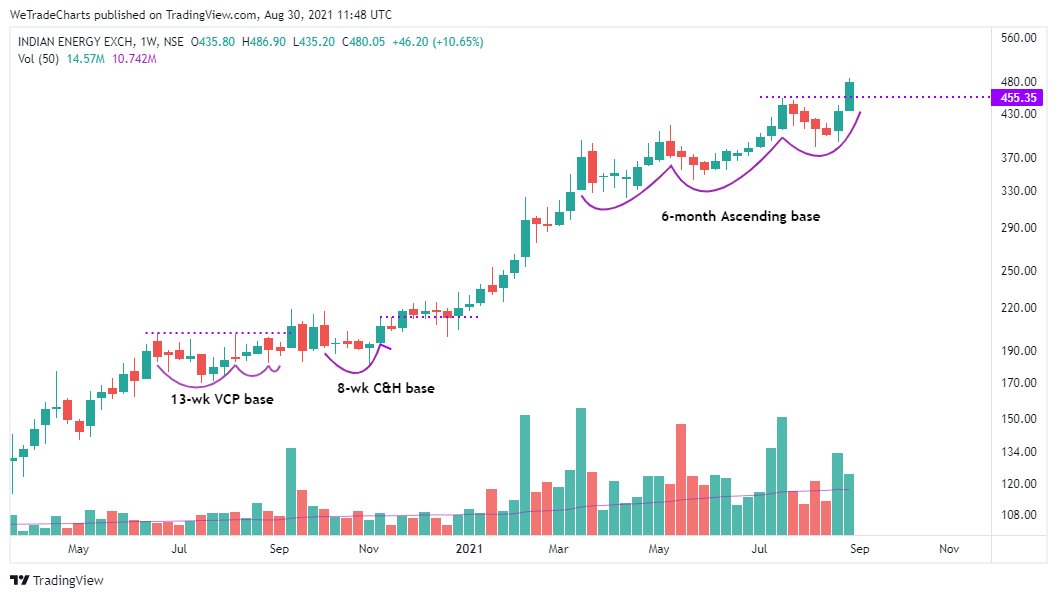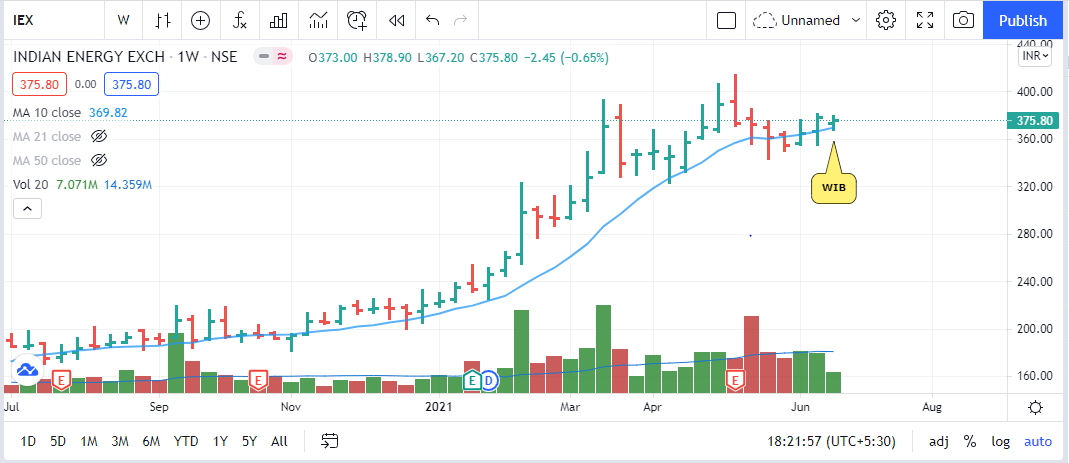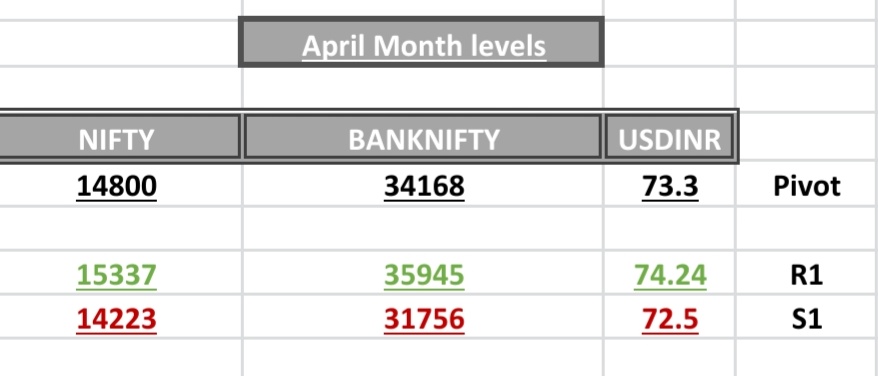#IEX
This is a cash cow in my portfolio, expect it to create wealth in the form of dividends and share buybacks.
I view this a technology company that happens to be in the business of energy exchange.
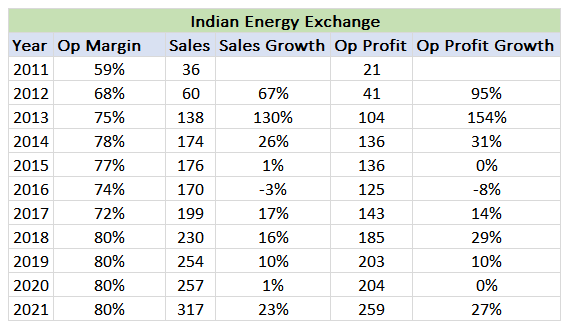
More from Tar ⚡
Guess the Sector, that this company operates in.
ROCE 1 Yr: 32.7%
ROCE 3 Yr: 24.8%
ROE: 27.4%
ROE 3 Yr: 19%
Op Margin: 28.4%
Reserves: 32% of Current Market Cap
Debt: Nil
Profit CAGR 3Yrs: 54%
Debtor Days: 15
Inventory Turnover > 5
CFO YoY Increase : 160%
Some of you got it correct. Its Anjali Portland.
The company just acquired another cement company that will double the total sales immediately.
https://t.co/2xVnpJapPy
The acquisition was financed by adding debt, so interest costs from next quarter will go up but still great!
For a company that operates in a cyclical sector like cement!
What I liked is that the company was able to maintain the balance sheet and margins even in a down cycle.
With real estate sector reviving, this can be a great bet from here.
No recommendations, just an observation.
Market started re-rating the stock as soon as they announced acquisition.
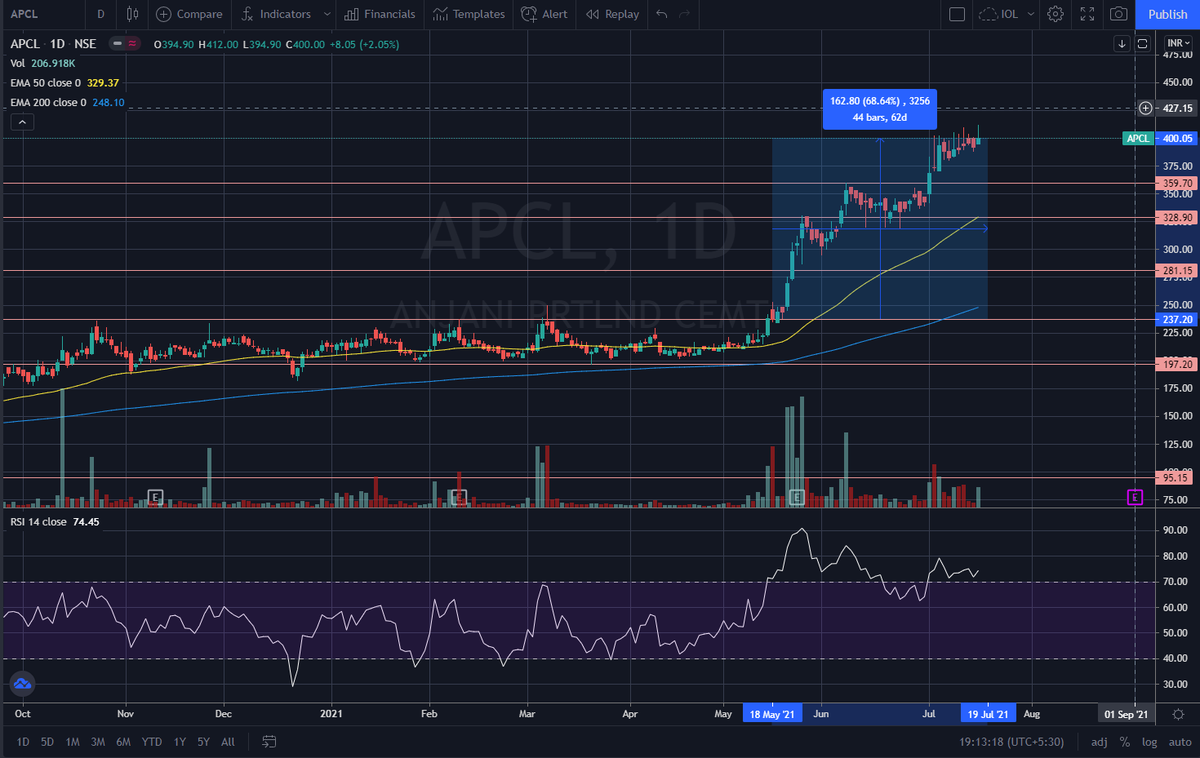
Someone did some work on details of acquisition, sharing the thread
ROCE 1 Yr: 32.7%
ROCE 3 Yr: 24.8%
ROE: 27.4%
ROE 3 Yr: 19%
Op Margin: 28.4%
Reserves: 32% of Current Market Cap
Debt: Nil
Profit CAGR 3Yrs: 54%
Debtor Days: 15
Inventory Turnover > 5
CFO YoY Increase : 160%
Some of you got it correct. Its Anjali Portland.
The company just acquired another cement company that will double the total sales immediately.
https://t.co/2xVnpJapPy
The acquisition was financed by adding debt, so interest costs from next quarter will go up but still great!
For a company that operates in a cyclical sector like cement!
What I liked is that the company was able to maintain the balance sheet and margins even in a down cycle.
With real estate sector reviving, this can be a great bet from here.
No recommendations, just an observation.
Market started re-rating the stock as soon as they announced acquisition.

Someone did some work on details of acquisition, sharing the thread
@drprashantmish6 @Investor_Mohit
— Arun Choudhary FCA (@YOUNGBRUJ) July 9, 2021
1) Information on cement sector in India
India at 550 MTPA is the 2nd largest cement producer globally. Expected to move to 650 MTPA by 2025E pic.twitter.com/GqtcSk03TU
More from Iex
#IEX
90% in 56 days https://t.co/KAsBVxzlxb

90% in 56 days https://t.co/KAsBVxzlxb

#IEX
— Aneesh Philomina Antony (ProdigalTrader) (@ProdigalTrader) August 24, 2021
reversal of polarity played out very well here. Strong momentum and demand here pushing price up. Might breakout to new highs soon#StockMarket #StocksInFocus #stocktrading #stockselection #StockToWatch pic.twitter.com/oOnpBOfaNa




